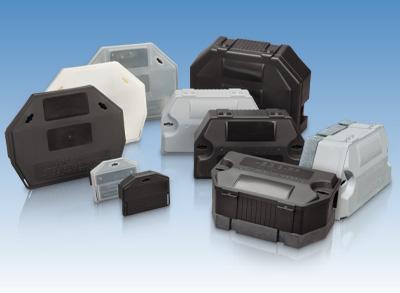
Tamper resistance, cost and time savings all play an important role in the selection process.
The rodent-control industry has travelled a long way when it comes to protecting rodenticides from the elements, and in turn protecting children and non-target animals from rodenticides. Here are some key things to consider in choosing the best bait station for a rodent-control application:
Rodent friendly: Several studies have shown that rodents prefer a simple floor plan with a straight, visible path between openings.
Compact: Stations with a smaller footprint have two advantages over other options: They fit under things such as shelves, pallets and equipment where rodents travel. The low ceiling height of a low-profile station appeals to a rodent’s burrowing behavior by providing a confined space where they can feel safe.
Durable hinges: Inoperable hinges result in lost time and money related to replacing the station. Broken hinges also can breakdown the station’s tamper-resistant status.
Drain holes:Stations are usually outdoors and subject to flooding. Fast, efficient water removal reduces water damage to the rodenticide.
Anchoring knock-outs: To be fully tamper resistant a bait station should be anchored against movement by children under age six, pets and wildlife.
Look for a bait station that meets EPA tamper-resistance criteria: Rodenticide labels state that applications must be kept away from children and non-target animals, or used in tamper-resistant bait stations. EPA Notice 94-7 establishes “tamper resistance” criteria.
Textured station bottom to accept adhesive: Textured (sanded) bait station bottoms increase surface area, which increases the holding power of adhesives used to glue a station to a concrete paver. Recent tests by Liphatech have shown that PL 200® and PL 500® brands provide superior holding power versus other liquid adhesives.
Quick and easy lock: The adage that time is money certainly applies here. Money is wasted when a technician has to struggle with a difficult or slow locking mechanism. • Service card holder: If service cards are used, a good station will provide a designated, protected location to keep them in place and minimize loss.
Service card holder: If service cards are used, a good station will provide a designated, protected location to keep them in place and minimize loss.
Rounded internal corners: Dirt and grime tend to accumulate in corners. Rounded corners are easier to clean with a brush or a quick swipe with a damp cloth.
Accepts rat or mouse snap traps: Sometimes rodenticides are inappropriate for a particular job. Some bait stations are designed to accept snap or glue traps, which make the traps tamper resistant.
Vertical and horizontal rods: For a bait station to be considered tamper resistant it must have a way to keep rodenticides inside, even if the station can be picked up and shaken. Most if not all commercial block rodenticide formulations have a hole in the middle so they can be skewered on a wire rod.
Lid opens away from wall: When a bait station lid opens away from the wall it stays open without being held while the station is cleaned, re-stocked and documented. This can significantly improve service time and add to the technician’s efficiency.
Choosing the right bait station not only saves time and money, but it can be a morale booster for service technicians by increasing productivity and effectiveness while reducing fatigue. A quality bait station can help on all three counts. Learn more about Liphatech’s line of Aegis® bait stations at liphatech.com.

